Wild names for wildlife
A diversity of wildlife populates the Morro Bay estuary and the variety of habitats that surround it, from the low-lying saltmarsh to the rocky tops of the Morros. Each of these species has at least one, typically two, and sometimes a plethora of names. Take the six-legged, many-egged specimen below.
Meet the toe-biter (Abedus genus): a bug of many names
This is an aquatic bug that lives in the creeks that drain into Morro Bay. It’s a bug with many common names: toe-biter, true bug, giant water bug, and ferocious water bug. Scientifically speaking, it’s a member of the Abedus genus, the Belostomatidae family, and the Hemiptera order. It’s also a hard-working father, as the grey balloon-like structures on its back are actually eggs, which he will tend to until they hatch.
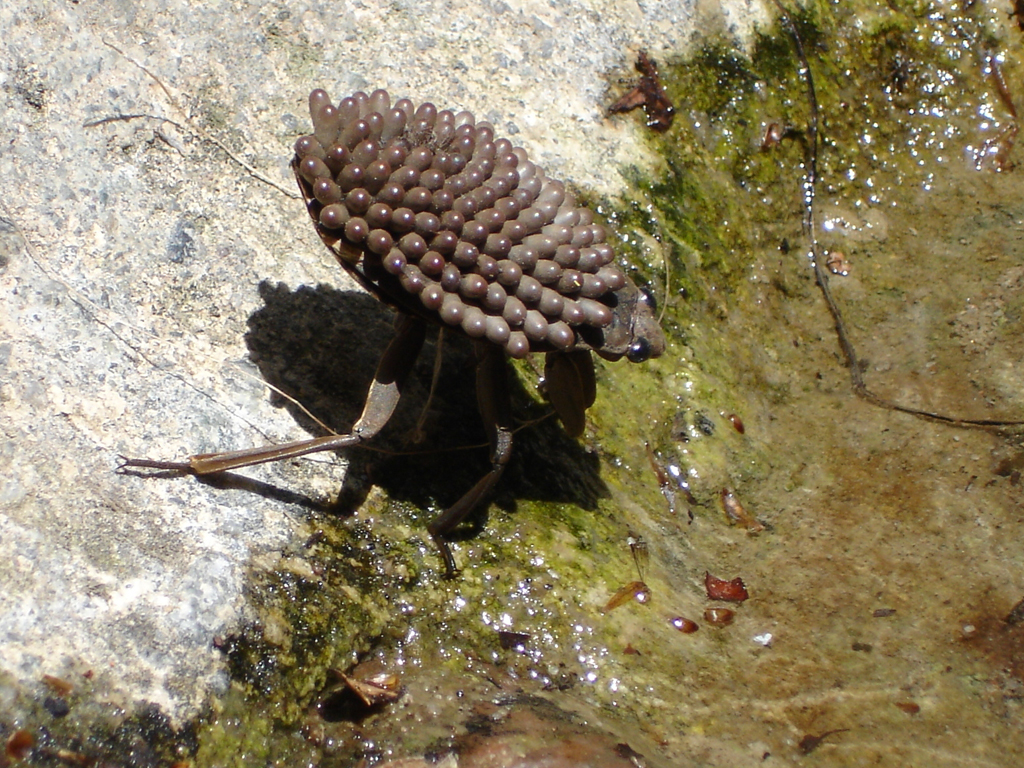
Here is an Abedus found during one of our annual bioassessment surveys. These bugs are fearsome predators in the riparian habitat that lines our local creeks. They have piercing mouthparts and a venomous bite, which has earned them the most-common of their names: toe-biter. While that bite is deadly to the bug’s prey, it is painful but not dangerous for humans.
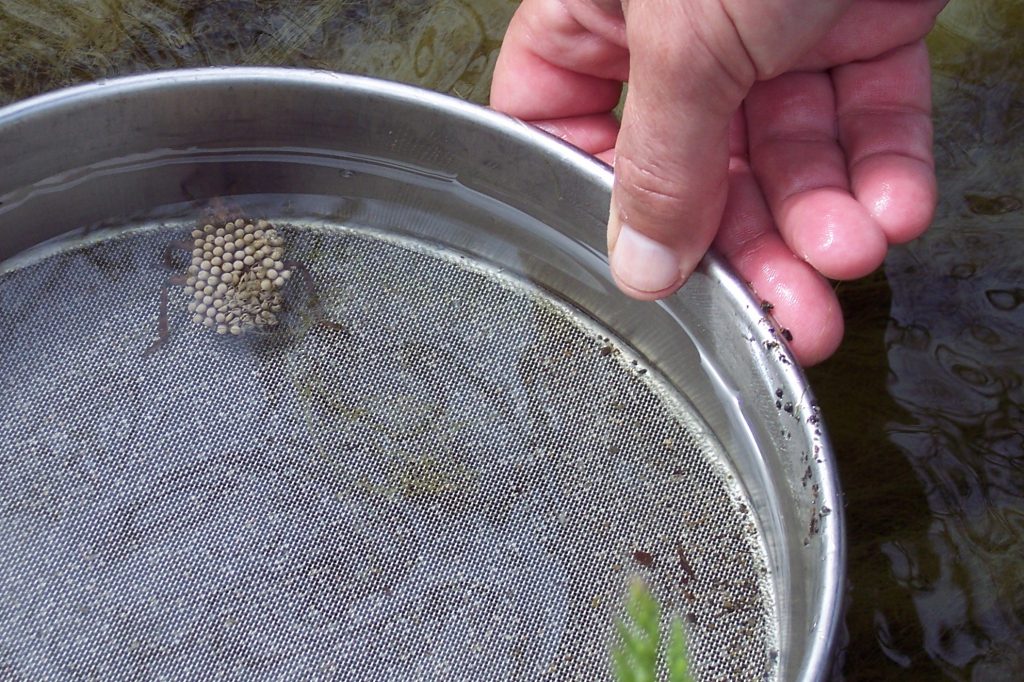
In today’s Photograph Friday post, we’re celebrating this diversity in lifeforms and names in a fun way, by highlighting a selection of local plants and animals with interesting common names. Specifically, we’re focusing on plants that are named after animals and animals that are named for fruiting plants. Check them out below!
Animals named for produce
Sea lemon (Peltodoris nobilis), also known as a Pacific sea lemon or noble Pacific doris
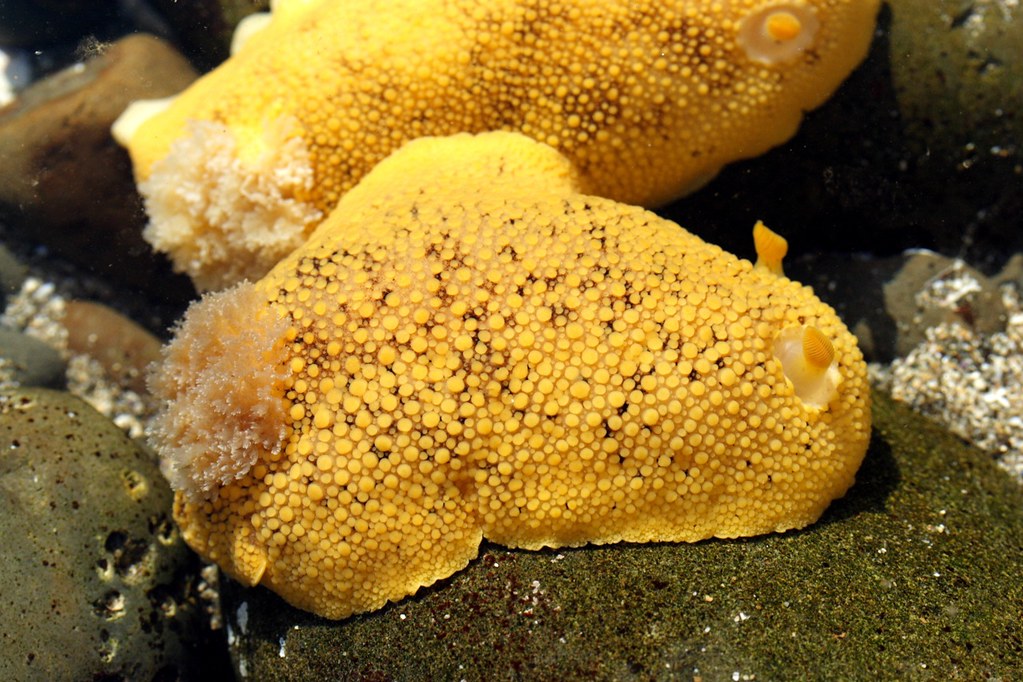
Find out how sea lemons taste and smell to predators.
California sea cucumber (Apostichopus californicus) also known as the giant sea cucumber
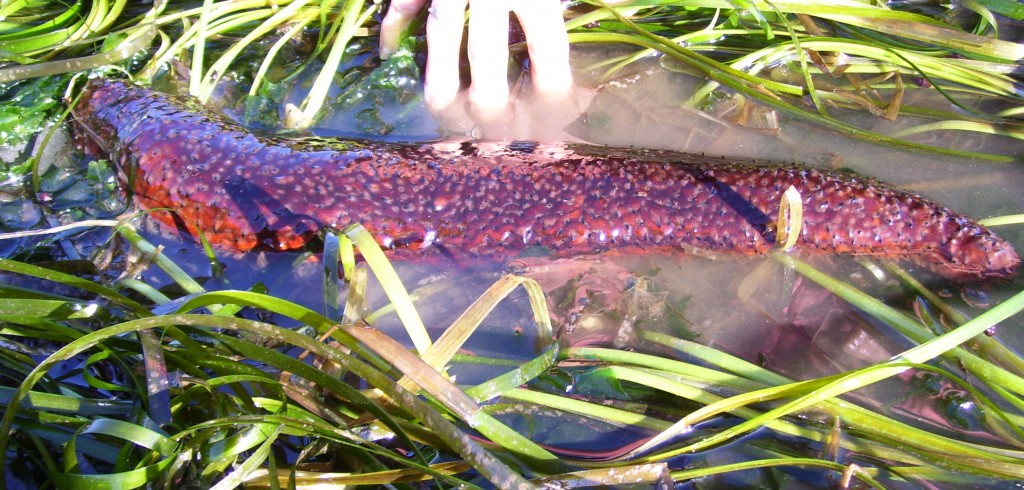
Like their garden-variety namesakes, California sea cucumbers are harvested as food. Learn more.
Plants named for animals
Sticky monkey flower (Diplacus aurantiacus), also known as bush monkey flower, and Central Coast monkey flower
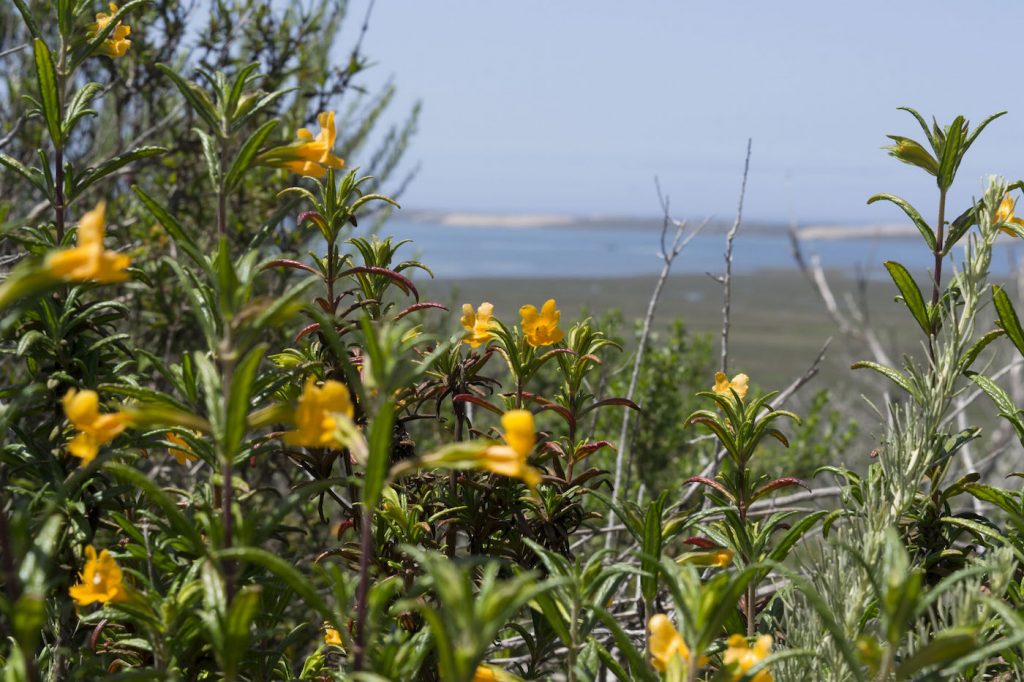
Learn about sticky monkey flower.
Salt marsh bird’s beak (Chloropyron maritimum ssp. canescens)
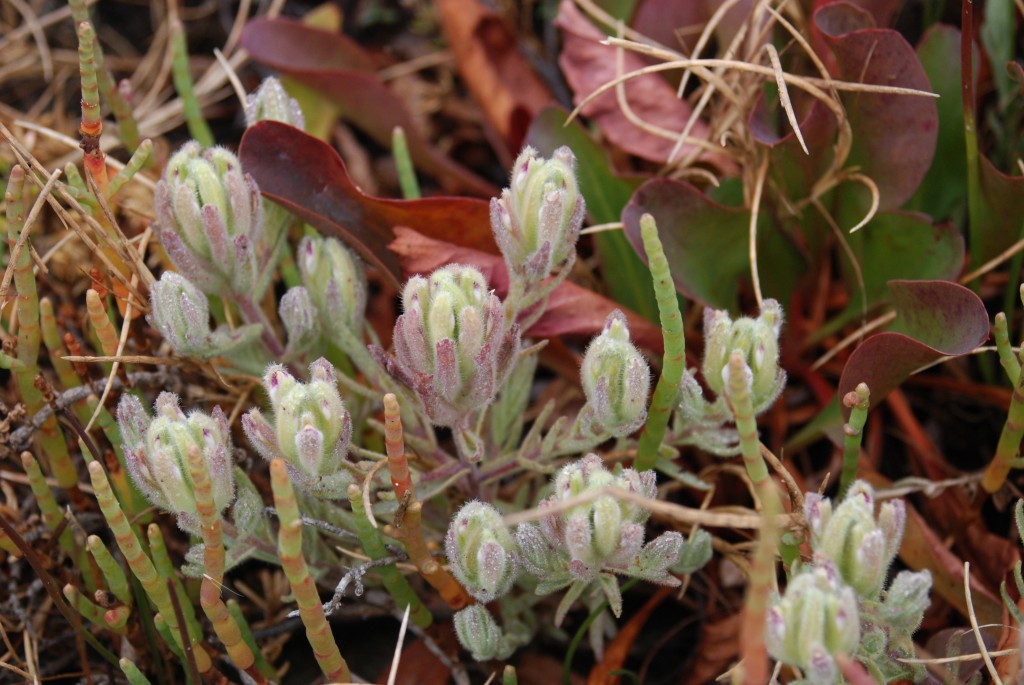
Salt marsh bird’s beak was added as federal endangered species in 1978. Learn more about this very rare native plant.
Strawberry anemone (Corynactis californica), also called strawberry corallimorpharian or club-tipped anemone
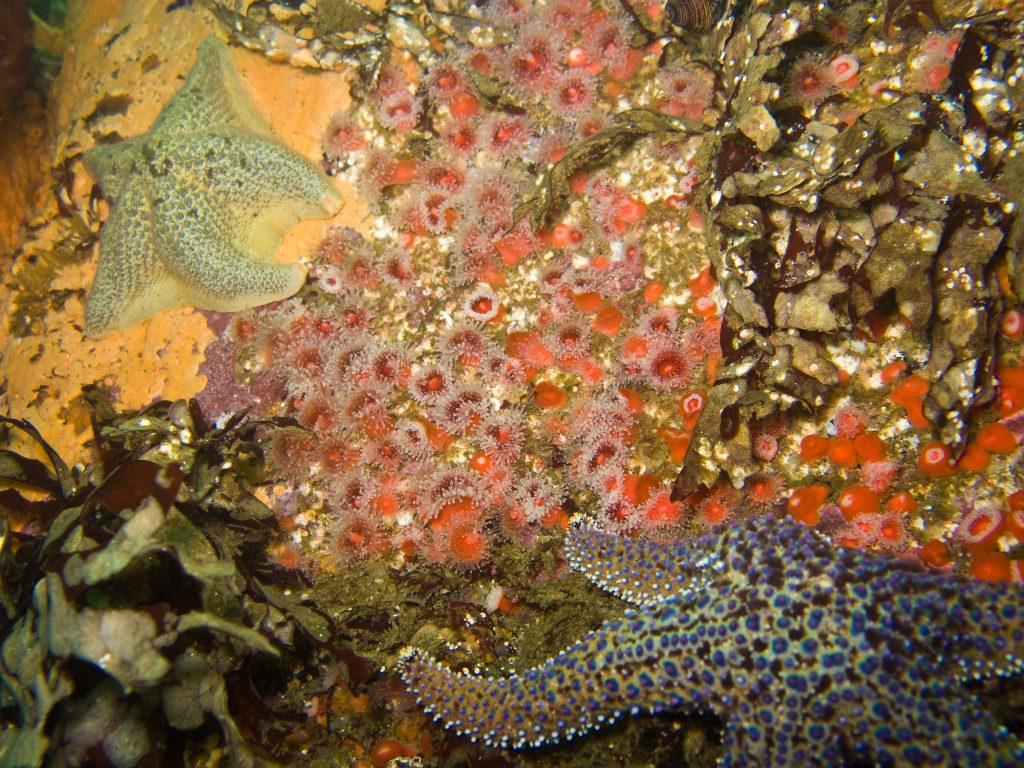
Learn where you can find strawberry anemone hanging around.
Hummingbird sage (Salvia spathacea)
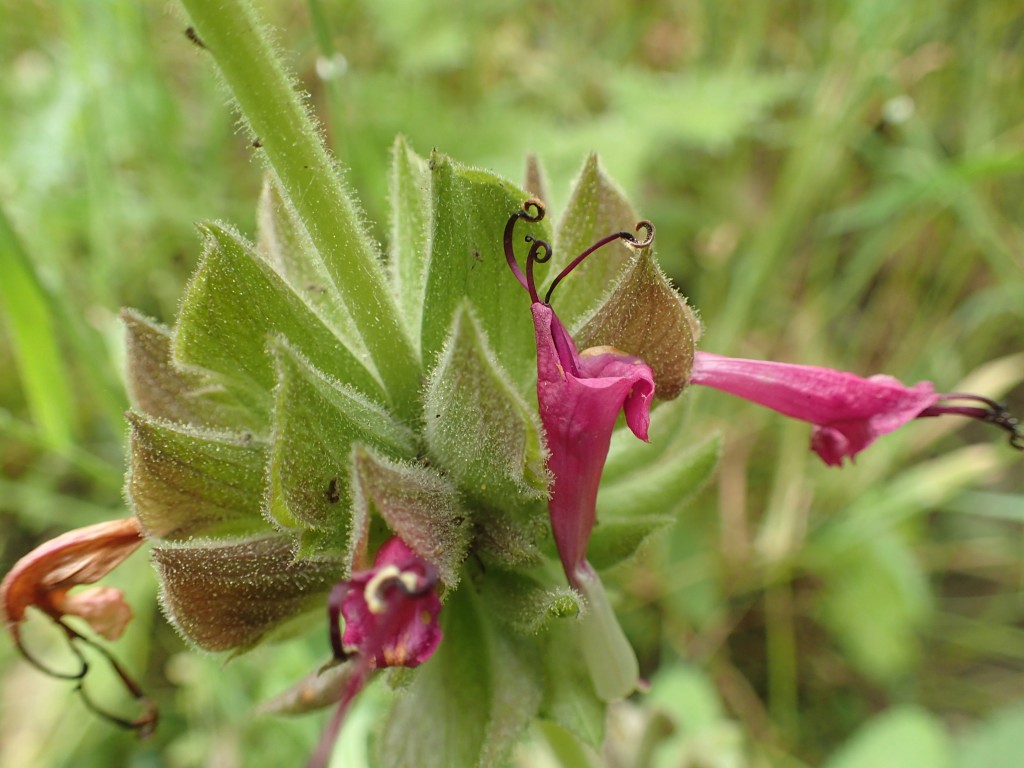
This drought-tolerant native plant grows wild and can be cultivated in gardens.
Coyote bush (Baccharis pilularis)
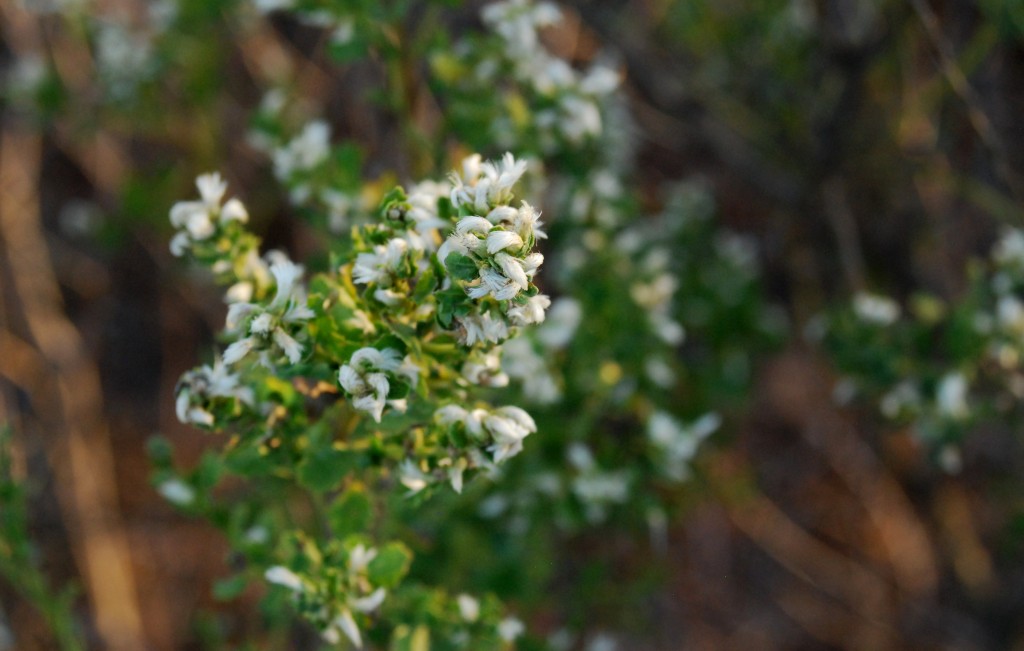
Coyote bush, also known as coyote brush, is common around the Marina Peninsula trail at Morro Bay State Park. Learn more about coyote bush.
Know more wild names?
Can you think of more local plants or animals with names that fit this pattern? Share your photograph and the species name to Facebook, Instagram, or Twitter and tag us! Instagram/Twittter: @morrobaynep Facebook: @mbestuary. We’ll enter your name into our August 6, 2021 drawing for a set of reusable sustainable utensils. They’re made from wheat and can be composted at home after a long life of accompanying you on camping trips, picnics, and other outdoor adventures.
Subscribe to get the Estuary Program’s blog delivered to your inbox each
Help protect and restore the Morro Bay estuary
- Donate to the Estuary Program and support our work in the field, the lab, and beyond.
The Estuary Program is a 501(c)3 nonprofit. We depend on funding from grants and generous donors to continue our work. - Purchase estuary-themed gear from ESTERO. This locally owned and operated company donates 20% of proceeds from its Estuary clothing line and 100% of Estuary decal proceeds to the Estuary Program. Shop online at esterosurf.com or at Joe’s Surfboard Shop in Morro Bay. Thank you, ESTERO!
- Purchase items from the the Estuary Program’s store on Zazzle. Zazzle prints and ships your items, and the Estuary Program receives 10% of the proceeds. Choose from mugs, hats, t-shirts, and even fanny packs (they’re back!) with our fun Estuary Octopus design or our Mutts for the Bay logo.